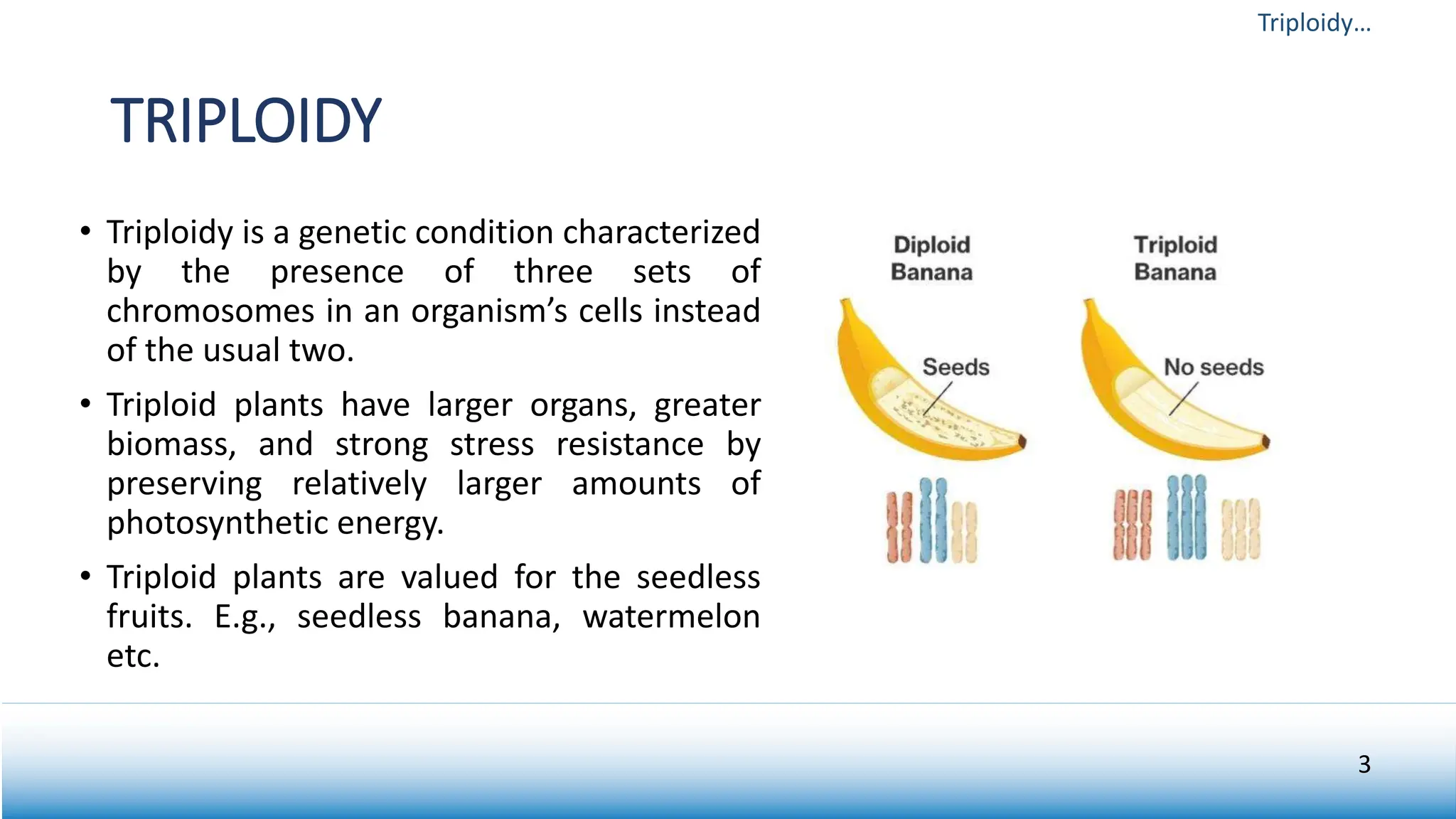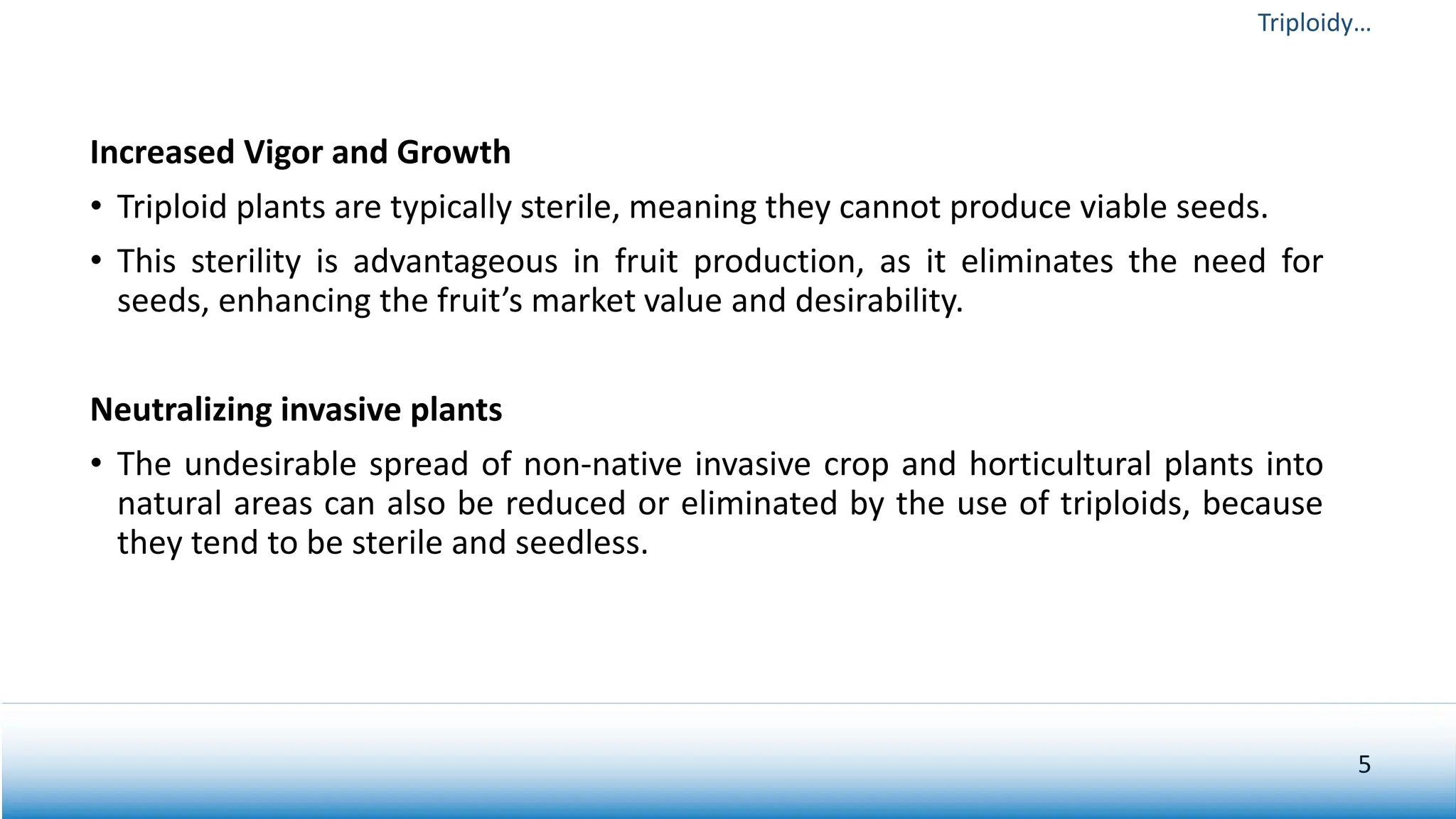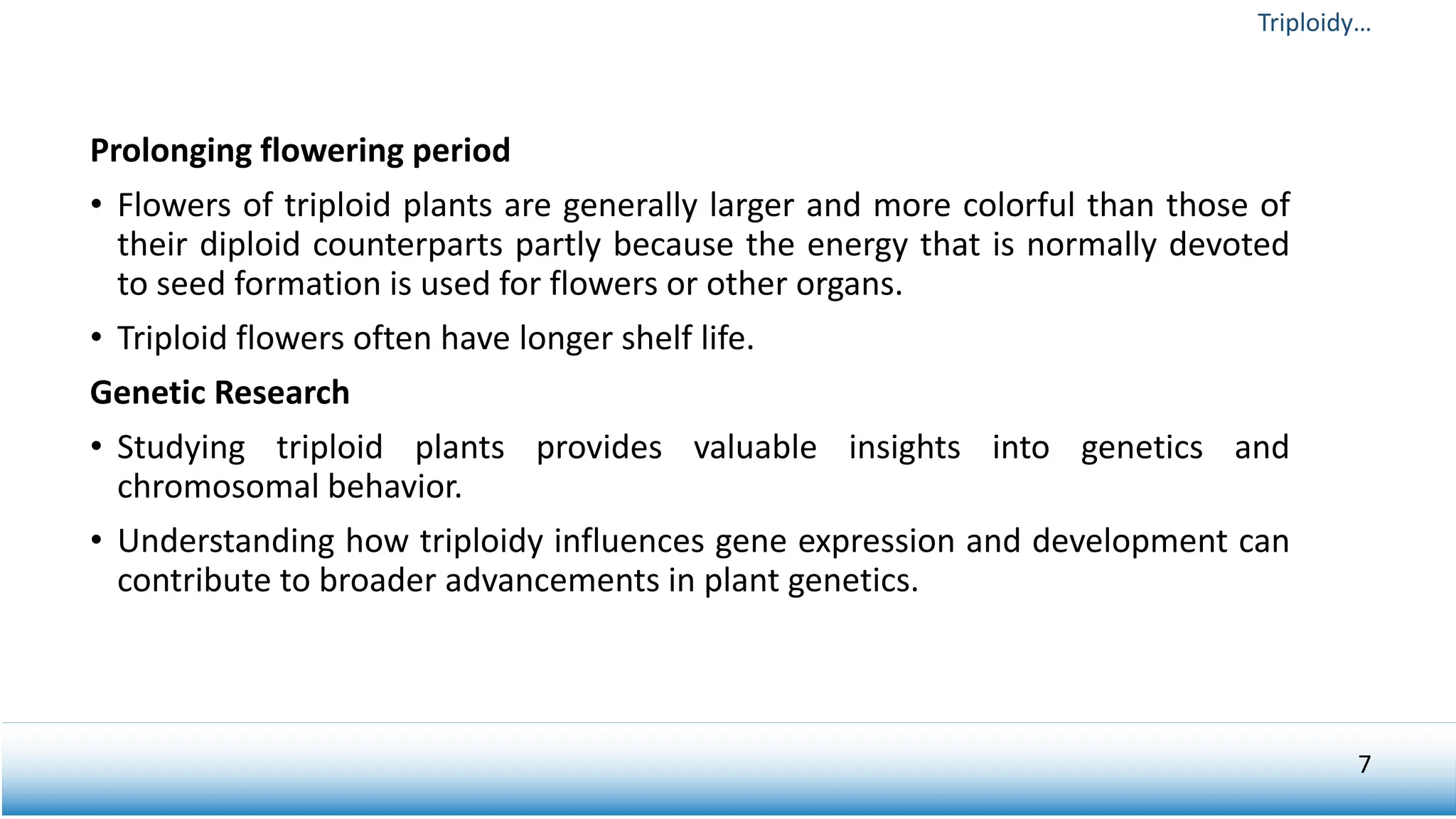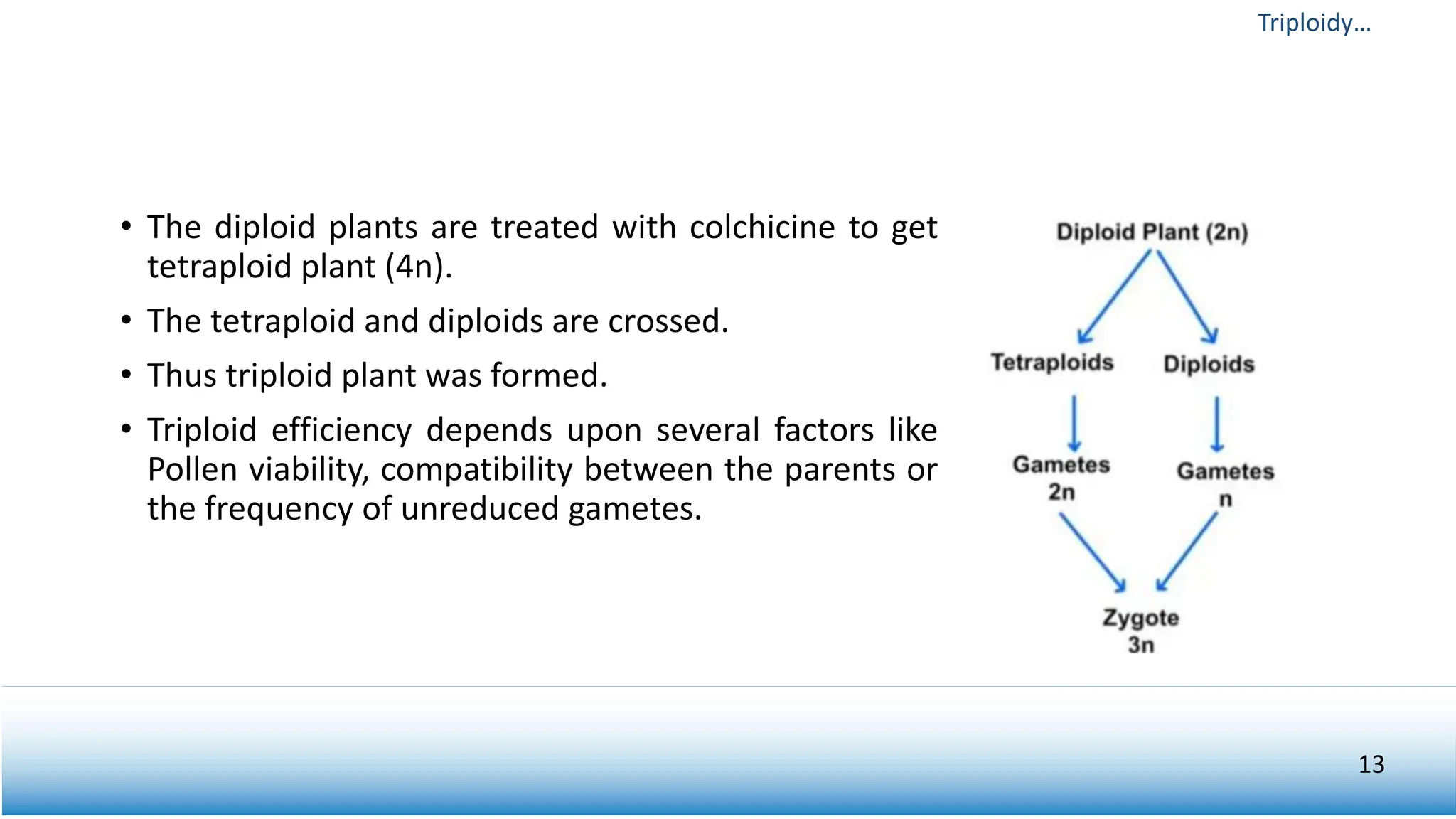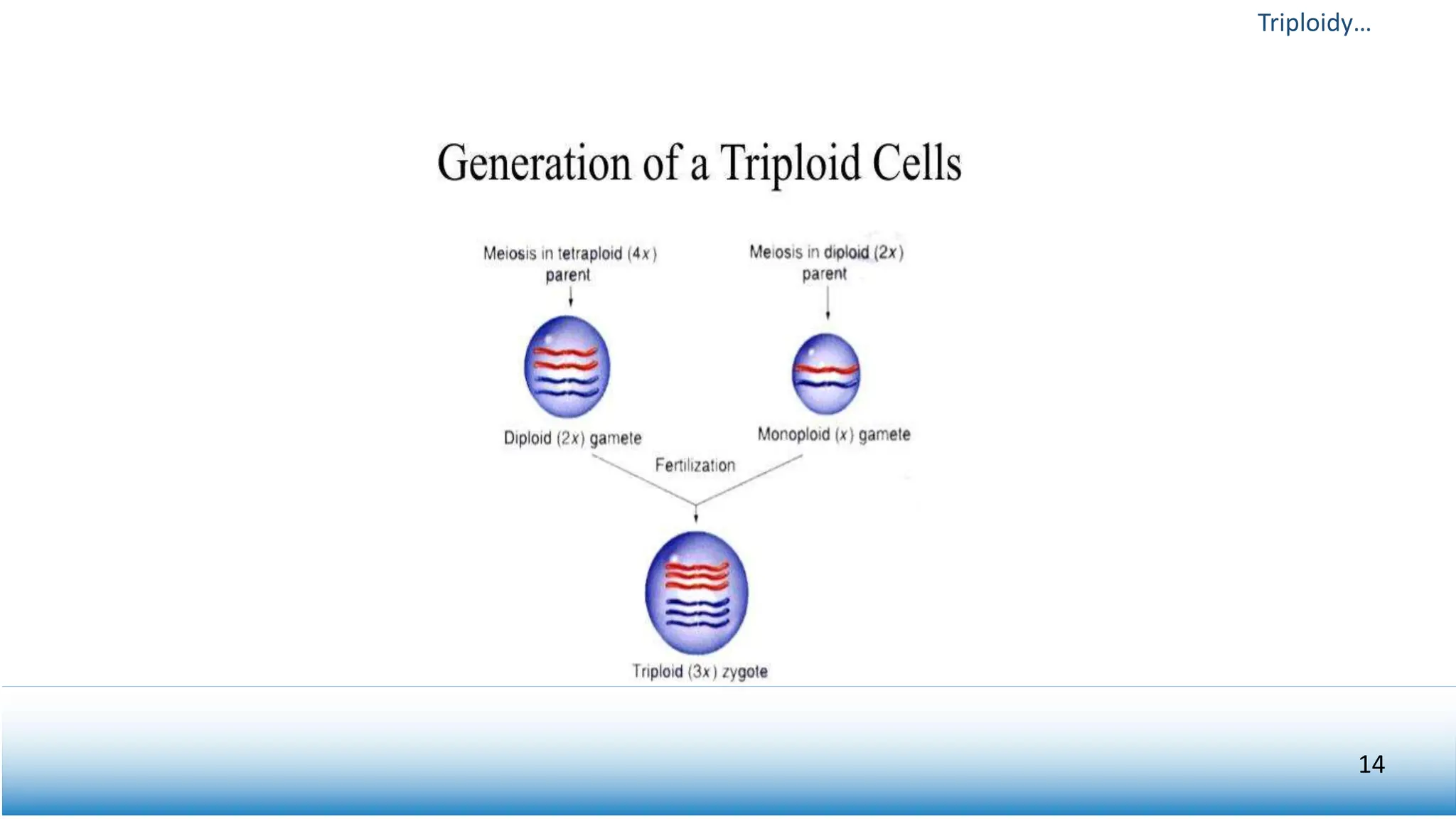The document discusses triploidy, a genetic condition in plants characterized by three sets of chromosomes, leading to advantages such as larger organ size, increased biomass, and seedless fruit production. It highlights the methods of producing triploid plants, including endosperm culture and hybridization, as well as their applications in horticulture and agriculture. Additionally, it outlines both the benefits and limitations of triploid plants, along with references for further reading.


